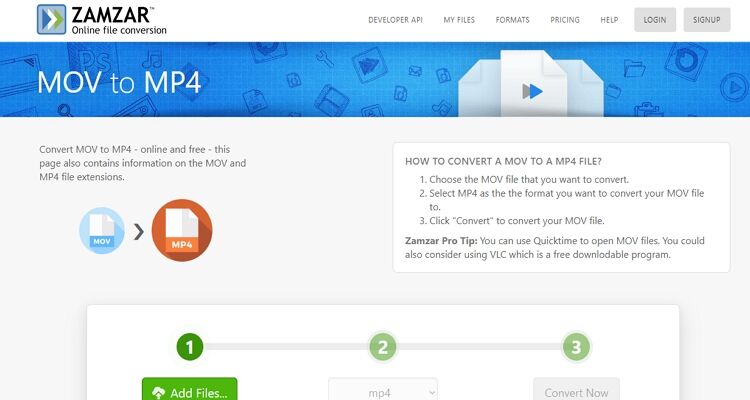

- Is mov better than mp4 for editing how to#
- Is mov better than mp4 for editing movie#
- Is mov better than mp4 for editing pro#
- Is mov better than mp4 for editing software#
You could, of course, use Episode, which is professional-quality multiformat transcoding software also produced by Telestream. If you have video in an Inter-frame codec that you would like to edit, then you should convert it to an Intra-frame codec first.
Is mov better than mp4 for editing how to#
How to convert from a delivery to editing format:
Is mov better than mp4 for editing movie#
Go to “Windows > Show Movie Inspector” and then under the heading for “Format,” it will list the codec (DivX, H.264, DV, etc). If you don’t know what format your video is, you can easily check it by opening it in QuickTime.

Is mov better than mp4 for editing pro#
For editing programs not able to handle these types of frames, this can result in frames being displayed out of order.īecause of all the processing needed to decode previous and next frames, Inter-frame video can cause a lot of problems when imported into a non-linear editing program such as ScreenFlow, iMovie or even Final Cut Pro for editing. So, if you try to edit video with P-frames, your computer has to go back to the previous I-frame and decode all 200 frames just to view current P-frame, which is a lot of processing, and can result in stuttering or even crashing.ī-frames, or bi-directional frames, are like P-frames, but instead of just saving the changes from the previous frame, they also take information from the next frame. Some highly compressed video formats can go 200 or more frames between I-frames. However, in order to view a P-frame, the computer has to go back to the last I-frame, and decode every single frame up until that P-frame. P-frames, or delta frames, contain only the changes from the last frame, making them much smaller in size than I-frames because they are only storing a fraction of the data. The reason is that the more I-frames you have, the larger the file is, and the goal of delivery codecs like H.264 or WMV is to compress the video as much as possible. Int er-frame codecs, alternatively, use very few I-frames. Every frame is encoded and decoded individually.

Int ra-frame codecs use I-frames exclusively. I-frames, also known as keyframes, contain all the information for a frame on each individual frame. Inter-frame codecs use three different types of video frames: I-frames, P-frames, and B-frames. To get a little technical, here’s how it works: Inter-frame codecs take advantage of redundant information on neighboring frames, and save space by storing the changes between frames. Inter-frame codecs, on the other hand, rely on information in preceding and occasionally upcoming frames. As the name suggests, you are basically encoding each separate frame as its own picture. Intra-frame codecs store all the video information for each frame on every individual frame. To handle these two scenarios, there are two distinct codec types: Intra-frame codecs (best for editing) and Inter-frame codecs (best for delivery). This can result in large, uncompressed files with lots of video data.Īlternatively, when delivering a digital video, you want your file to be compressed and as easy as possible for your video player to access, read and display. So, ideally, all the data or information for each frame should be easily accessible to the editing program. When editing digital video, non-linear editing programs work by accessing and changing the individual frames of that digital file. If you use a “delivery” format in an editing program (such as ScreenFlow), it can behave distinctly BADLY, causing all sorts of problems that, if you don’t know what’s going on, can appear to be caused by your editing program. In the world of digital video there are formats that are designed for editing, and then there are formats that are designed for delivery (or distribution). One of the first questions we ask (after “did you spill a cold beverage on your keyboard?”) is:ĭo you have imported video in your projects and if so what format/codecs are those imported videos? Editing formats vs.

We occasionally get support calls from people that are experiencing strange lagging, stuttering, or freezing of ScreenFlow when they are trying to edit their projects.


 0 kommentar(er)
0 kommentar(er)
